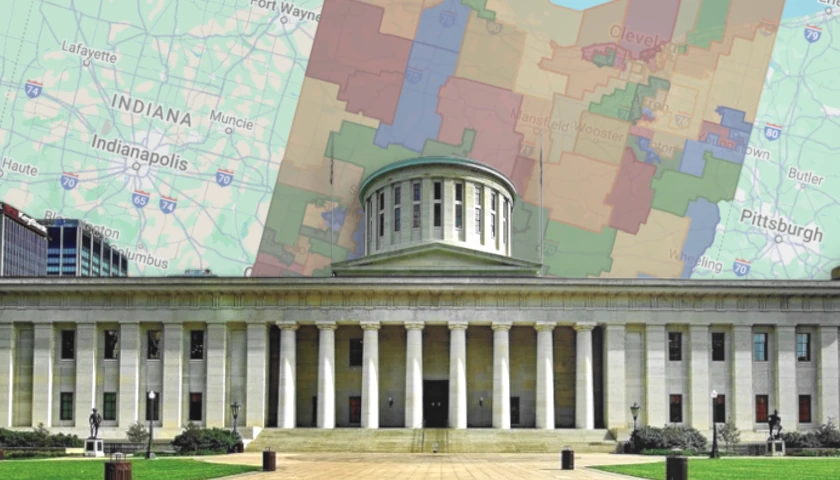Pennsylvania’s Supreme Court, deliberating over oral arguments made last Friday, will soon decide the congressional-district boundaries that apply in next year’s elections.
State House Majority Leader Kerry Benninghoff (R-Bellefonte) has meanwhile asked the court to strike down a newly enacted map containing districts for his own legislative chamber.
Every decade, the General Assembly is tasked with redrawing the borders of Pennsylvania’s congressional districts and sending that map to the governor for his approval. Redistricting for the state House and state Senate is undertaken separately by a five-member Legislative Reapportionment Commission (LRC) which comprises the Republican and Democratic leaders from both state-legislative chambers, as well as a chair appointed by the state Supreme Court.
The initial draft of the congressional redistricting plan was designed by a private citizen, Amanda Holt. State legislators later made adjustments to the map and passed it, though Gov. Tom Wolf (D) vetoed it.
Failure to quickly agree on the new congressional districts meant the courts would settle the matter. Pennsylvania Commonwealth Court Judge Patricia A. McCullough (R) was assigned to choose between over a dozen maps submitted by lawmakers, the governor and other parties. She ended up selecting the plan passed by the GOP-run General Assembly, reasoning that “neither Governor Wolf nor any other party herein has advanced any cognizable legal objection to the constitutionality of the congressional districts contained therein.”
Wolf appealed that decision to the state Supreme Court. The odds that its members will agree with McCullough seems slim insofar as Democrats hold five of the high court’s seven seats.
The congressional map that Republican lawmakers want enacted would put their party at a somewhat greater advantage than they have now; seats presently held by U.S. Representatives Matt Cartwright (D-PA-08) and Conor Lamb (D-PA-17) would be especially harder for the Democrats to keep. Still, a nonpartisan analysis by the Princeton Gerrymandering Project concluded that the plan only modestly benefits Republicans and contains a relatively high number of districts—five out of seventeen—that a member of either major political party could win.
McCullough moreover found that the GOP-favored map did not contain too many splits of cities and counties, something lawmakers are cautioned to avoid unless they are necessary to equalize all districts’ populations. By contrast, a map Wolf himself proposed would split Bucks County between districts for the first time in 150 years and divide Pittsburgh for the first time ever.
While Republicans fear what the state Supreme Court might decide regarding the congressional map, the justices have already exercised considerable, albeit indirect, sway over the state House reapportionment plan. The court appointed Democrat Mark Nordenberg to chair the LRC and thus oversee the reworking of state House and state Senate maps.
While the LRC produced a relatively uncontroversial state Senate redistricting plan, the panel created a new state House map that received an “F” grade from the Princeton Gerrymandering Project in terms of competitiveness. Opponents also complained that the state House map results in too significant population differences between districts, improperly divides racial-minority communities, and unfairly advantages Democrats.
Benninghoff and Senate Majority Leader Kim Ward (R-Greensburg) both voted against the first draft of the state-House map passed by the LRC in December. The panel made some adjustments after considering public comment and passed a final version earlier this month, though Benninghoff remained opposed. The House Republican leader is asking the Supreme Court to leave the present state-legislative map in place for the 2022 elections.
“As a commissioner on the Pennsylvania Legislative Reapportionment Commission, I have been vocal throughout the state redistricting process about these glaring legal issues,” Benninghoff said in a statement. “It is clear the only way to remedy these obvious flaws now is for the Pennsylvania Supreme Court to send this plan back to the drawing board.”
– – –
Bradley Vasoli is managing editor of The Pennsylvania Daily Star. Follow Brad on Twitter at @BVasoli. Email tips to bradvasoliwriter@gmail.com.
Photo “Kerry Benninghoff” by Rep. Kerry Benninghoff. Background Photo “Pennsylvania State Capitol” by Governor Tom Wolf. CC BY 2.0.





